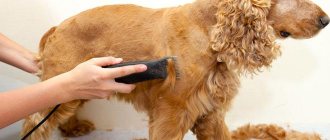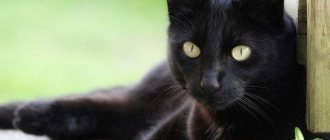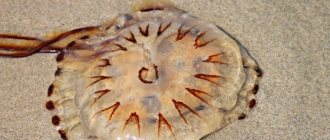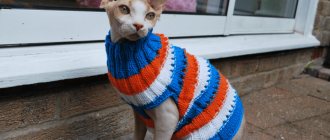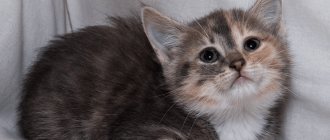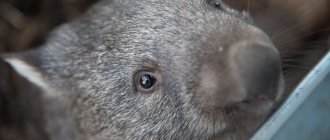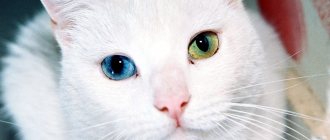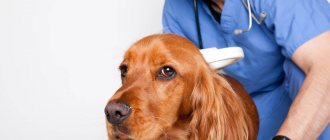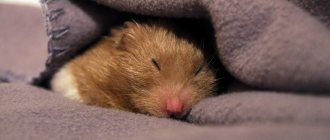Not many people know that cats have a navel, since it is usually not visually visible. Even with a thorough examination, it is impossible to notice it in most cases or can be confused with signs of a dermatological disease. In addition, there is a myth that these animals do not have a scar on their stomach from the umbilical cord. To dispel it, it is enough to understand the physiological characteristics of the pet.
A little about cat physiology
There is no doubt whether cats have a belly button. According to the school zoology course, all placental mammals have it.
Purpose of the umbilical cord
Before it is born, the embryo is connected to the uterus through the umbilical cord. From it he receives oxygen and important nutrients. The umbilical cord also filters waste products, returning them back to the mother. It is her body that brings them out.
Do kittens have an umbilical cord?
It remains to be seen whether kittens have an umbilical cord after birth. At birth, all newborns are surrounded by a placenta, or afterbirth. It contains a large number of useful microelements, so the cat eats it. At this point, she bites the umbilical cord connecting the kittens to the placenta.
At the site of damage, a stump and a small wound appear, which the new mother must lick. The lysozyme contained in her saliva acts as an antiseptic and accelerates the process of tissue regeneration.
4-7 days after birth, the stump dries out and falls off. The umbilical ring grows together, and in its place a slightly convex and clearly visible bright pink spot forms.
What does the belly button look like on an adult cat?
Within a month, a small round or oval scar becomes lighter and is overgrown with new hair. Unlike humans, the navel of mature mustachioed pets is practically invisible and does not have a characteristic convex shape. This is due to the absence of the umbilical cord tying stage.
What sparked the interest?
The question of whether cats have a belly button or not usually arises because for some owners, pets are like children. In this regard, they constantly examine the animal’s body to identify various pathologies. If they notice something unusual, they may sound the alarm and go to the clinic. In practice, these may turn out to be physiological features of the body structure. Knowing the characteristics of the cat’s body, you can avoid such incidents.
Information about the scar on the abdomen and its location in the animal can be useful for the owner, as this knowledge will help to notice an umbilical hernia or other pathologies in time.
How to find a cat's belly button
Problems with finding a scar in newborn kittens usually do not arise due to its bright color. Searching on the body of an adult animal is more problematic. If you don’t know how to find a cat’s navel, then use the following instructions:
- Turn your pet over with its belly up and gently place it on its back. An assistant may be needed to ensure secure fixation.
- Carefully examine the lower body. The target of your examination is the area between the ribs and the beginning of the pelvis, just above the place where the hind legs connect to the body.
- Find an area that is as hairless as possible. The scar should be small and pale, but strictly round.
Additional difficulties depend on the appearance of the animal. The length of the fur and its color can interfere with the study.
In long-haired and short-haired animals
Despite the presence of a characteristic receding hairline, the long and thick coat greatly interferes with visibility. If it is not too thick and is parted along the body, this will simplify the matter. But it is easiest to detect scarring in short-haired and hairless breeds.
In light and dark cats
The darker the animal, the easier it is to notice its receding hairline. Contrast is a decisive factor here, so finding a light spot in the depths of a fur coat with a similar color is very problematic.
Dehydration
A newborn's kidneys function at 25% of the level of adult cats. A kitten's immature kidneys are unable to concentrate urine and therefore produce large amounts of undiluted urine (primary urine). If a kitten stops suckling, it quickly develops dehydration. Therefore, if the kitten is losing or not gaining weight, is hypothermic, or is too weak to nurse, consider dehydration.
Increased renal fluid loss must be compensated by adequate intake of mother's milk or, if bottle-fed, commercial kitten milk containing adequate water. Sudden weight loss with diarrhea is associated with water loss.
Signs of dehydration:
dry mouth; the mucous membrane of the oral cavity and tongue is bright pink; decreased muscle tone and weakness.
If you pinch a kitten, the skin fold remains instead of going back. Treatment for dehydration is the same as for diarrhea (see Common Feeding Mistakes).
Problems associated with a cat's belly button
Due to the lack of hair, owners often confuse a cat's navel with a consequence of dermatitis. In fact, you should only worry when its color, size and outline begin to change. These symptoms are especially dangerous for newborn kittens, since their bodies are most vulnerable to infections.
Inflammation
Redness and swelling of the wound at the site where the umbilical cord was chewed are characteristic of inflammation. It occurs as a result of tissue infection caused by the following reasons:
- neglect of the rules of asepsis and antisepsis on the part of the owner helping during childbirth;
- too short stump remaining from the umbilical cord;
- improper care of newborn kittens;
- the presence of dental diseases in the cat who gave birth.
Prolonged inflammation due to infection is fraught with suppuration of the wound. Due to the close connection of the stump with the internal organs, the liver may be at risk. Without timely help from a veterinarian, the baby risks dying from sepsis.
Treatment and diagnosis
On the cat owners forum you can find many stories about umbilical hernia in pets. Veterinarians and experienced felinologists strongly recommend consulting with a surgeon and not self-medicating.
The doctor makes an individual decision for each specific case:
- Prescribes, if necessary, examination of the convexity: x-ray or ultrasound;
- Applies conservative treatment: sets prolapsed organs and fixes the navel area with a bandage. Within one to two months, the purr will need a consultation and examination by a veterinarian.
Performs an operation: removes the hernial sac and stitches the umbilical opening. The animal is put on a blanket or a protective collar for two weeks so that the baby does not lick or break the postoperative suture.
You should know:
Surgical intervention is performed on a teenage kitten only when it is already possible to select the minimum dose of anesthesia.
Signs for urgent medical attention
Possible umbilical complications occur especially often in newborn pets. Contacting a veterinarian is necessary when a depressed general condition is observed. The newborn may refuse to eat, and an increase in temperature may also be observed.
The infected navel is red and swollen. This place can become a point of entry for infection. The navel becomes inflamed when the mother chews the stump too short. The disease can also occur if the mother has dental disease.
An infected belly button often begins to fester. The umbilical stump is closely connected to the kitten's internal organs. For example, infection poses a real threat to the liver.
Important! Septicemia develops if left untreated and leads to the death of the individual. To prevent the death of valuable breeds, breeders treat the navel of a newborn with iodine. If necessary, treatment with disinfectants must be repeated
If necessary, treatment with disinfectants must be repeated
To prevent the death of valuable breeds, breeders treat the navel of a newborn with iodine. If necessary, treatment with disinfectants must be repeated.
If local treatment does not improve the condition, general treatment is used. For example, a doctor may prescribe antibacterial drugs that are administered intravenously or intramuscularly. Sometimes stimulant therapy is used. Modern veterinarians successfully use new homeopathic remedies.
Important! Veterinarians consider umbilical diseases to be infectious. Even at the first signs, the disease can be transmitted to all kittens born. There is usually no urgent need to see a doctor due to the discovery of a navel.
Any movement from a familiar environment is stressful for the animal.
It is usually not necessary to see a doctor too urgently due to the discovery of a navel. Any movement from a familiar environment is stressful for the animal.
Care and attention are important for a pet, in this case he will respond with sincere gratitude. The owner's curiosity will help prevent the development of a serious illness. After all, a pet’s health is a truly important aspect for everyone’s well-being.
After all, the health of a pet is a truly important aspect for everyone’s well-being.
https://kotsobaka.com/koshki/pupok-u-kota.htmlhttps://usatiki.ru/est-li-u-koshek-pupok/https://gafki.ru/koshki/pupok-u-kota. html
Physiological significance
Knowing your pet's physiology is no nonsense. Only through knowledge can you save your beloved animal from many health-related troubles - the same hernia, for example. We must not forget that self-diagnosis is not a solution at all, since the cat’s owner lacks qualifications, as a result, traces of the umbilical cord will seem like a catastrophic phenomenon.
The remnants of biology taught at school will help answer the above question, whether cats have a navel. The navel in one form or another can be found in every animal belonging to the mammalian division. Cats are no exception to the rule, so the answer to the question of whether cats have an umbilical cord is identical.
Pregnancy takes a little over two months. During this entire period, the umbilical cord connecting the embryo to the uterus provides it with nutrients drawn from the mother’s body that affect the formation and development of the embryo.
After the birth is over, the mother gnaws the umbilical cord and licks the place where it connects to the baby’s body. It is worth mentioning that cat saliva contains a number of B vitamins, which give it the ability to heal and disinfect.
Important! After some time, the mark from the umbilical cord disappears, becoming overgrown with fur and not differing in color from the other skin covering the tummy. Because of this, it can be difficult to detect where a cat's belly button is.
About regional development
“The desire of the region’s leadership to make it successful must and will be supported. For successful development, it is necessary to reduce the burden of debt obligations. This issue needs to be carefully considered."
“I propose to restructure the budget loans that were provided to the regions last year to implement measures to combat the epidemic. These loans mature in two months, on July 1. I propose to extend them until 2029.”
“We will provide a fundamentally new development tool - infrastructure budget loans at a rate of no more than 3% per annum and a repayment period of 15 years. By the end of 2023, we plan to allocate such infrastructure loans in the amount of at least 500 billion rubles.”
“We need to speed up the construction of the Moscow-Kazan highway and, moreover, extend it to Yekaterinburg. Complete this project in three years.”
saving
Russian President Vladimir Putin during his annual address to the Federal Assembly
Photo: IZVESTIA/Kristina Kormilitsyna
Prevention of umbilical hernia in a kitten
The best way to prevent pathology is to carry out competent prevention. Measures to protect against complications:
- Examination of newborn kittens by a veterinarian.
- Massage of the abdominal wall to stimulate the healing of the umbilical ring
- Until 2 months of age, avoid damage to the abdominal wall. Take care of the kittens, do not step on or squeeze them.
- Monitor the kittens' diet. A proper diet will help you avoid constipation, diarrhea, gas formation and intestinal problems, as well as prevent intestinal prolapse into an open umbilical ring.
Little pets are just exploring the world around them and completely trust you. Correct diagnosis of congenital pathologies will not only save their lives, but will also fill them with joy.
Sources
- https://MrKot.com/est-li-u-koshek-pupok
- https://usatiki.ru/est-li-u-koshek-pupok/
- https://gafki.ru/koshki/pupok-u-kota.html
- https://FB.ru/article/262481/est-li-u-kotov-pupok-vyiyasnyaem-gde-u-koshek-nahoditsya-pupok
- https://zooparkus.ru/sobaka/pupok-u-kota.html
- https://natalyland.ru/est-li-u-kosek-pupok-gde-on-nahoditsa/
- https://rudatings.ru/zdorove/kak-pererezat-kotenku-pupovinu.html
[collapse]
Main symptoms
The clinical picture of tooth loss varies depending on the cause that caused this phenomenon. If a structural unit of the mastication apparatus falls out due to injury, it is enough to treat the wound with a disinfectant solution, and if it does not become infected, the damaged area will heal safely.
The following symptoms are reasons to contact a veterinary clinic:
- gums become swollen, red, and bleed;
- saliva is released abundantly, which is why the cat’s face and neck are constantly wet;
- ulcers form in the oral cavity;
- pus in saliva;
- a foul smell of rotting emanates from the mouth;
- presence of difficulties with chewing;
- lack of appetite.
As a rule, the cat’s behavior changes, he becomes restless, apathetic, and loses weight. The animal refuses food, even if it is very hungry. If a cat tries to eat, he does it very carefully and slowly, as chewing causes him discomfort. As a rule, he also refuses water.
The owner should observe the condition of the animal; it is advisable to write down changes in order to tell the veterinarian about them. This will greatly facilitate diagnosis and determine treatment.
Causes of umbilical hernia
In its structure, the pathology is a small opening (canal, gate), the part of the abdominal wall emerging from it forms a hernial sac. The movement of nearby organs occurs into it: the uterus or its parts, the bladder, the peritoneal omentum, and intestinal loops. Organs displaced from their anatomical places form hernial contents.
The umbilical type of the disease is most often observed in small kittens due to abnormalities in intrauterine development. In adult animals, hernias are acquired.
Veterinary experts believe that the following factors lead to the appearance of pathology in pets:
- Genetic predisposition is one of the main reasons for the formation of an umbilical hernia. The genes are responsible for the formation of the umbilical ring during fetal development. Malfunctions in the gene apparatus lead to an abnormal structure of the ligamentous apparatus and the umbilical vein, which provokes the formation of the umbilical opening.
- Some breeders believe that the cause of the pathology is the owner’s incorrect actions when the umbilical cord breaks, which leads to the expansion of the umbilical ring. The inexperience of a young mother cat that incorrectly gnaws the umbilical cord of newborns can also lead to trouble.
- Increased intra-abdominal pressure is a common cause of development. In both small kittens and adult animals, blood pressure increases with severe constipation, vomiting, and excessive physical activity.
- Various injuries and mechanical damage are the cause of acquired pathology. Falls from heights, blows, and bruises lead to stretching of the abdominal muscles and displacement of internal organs.
We recommend reading about what to do if your cat develops a tumor. You will learn about the reasons for opening a tumor, the rules for treating a wound, and treating a tumor. And here is more about the reasons why a cat doesn’t eat.
